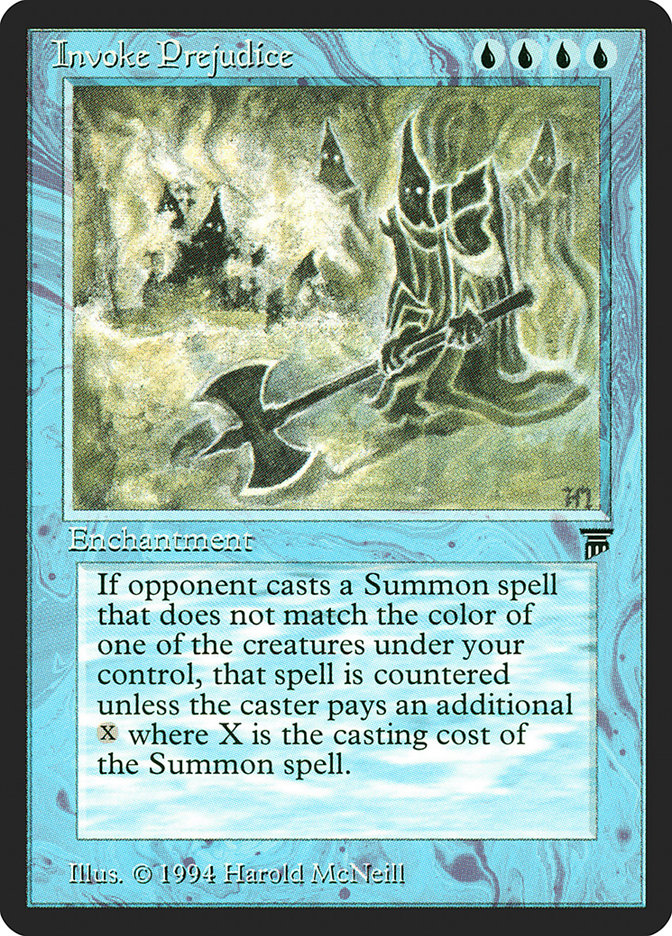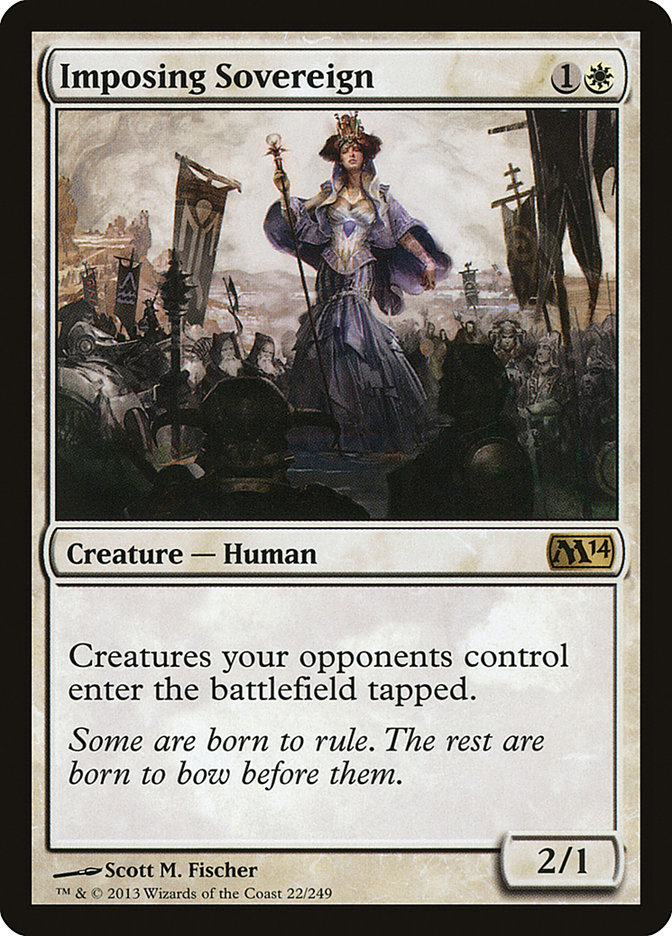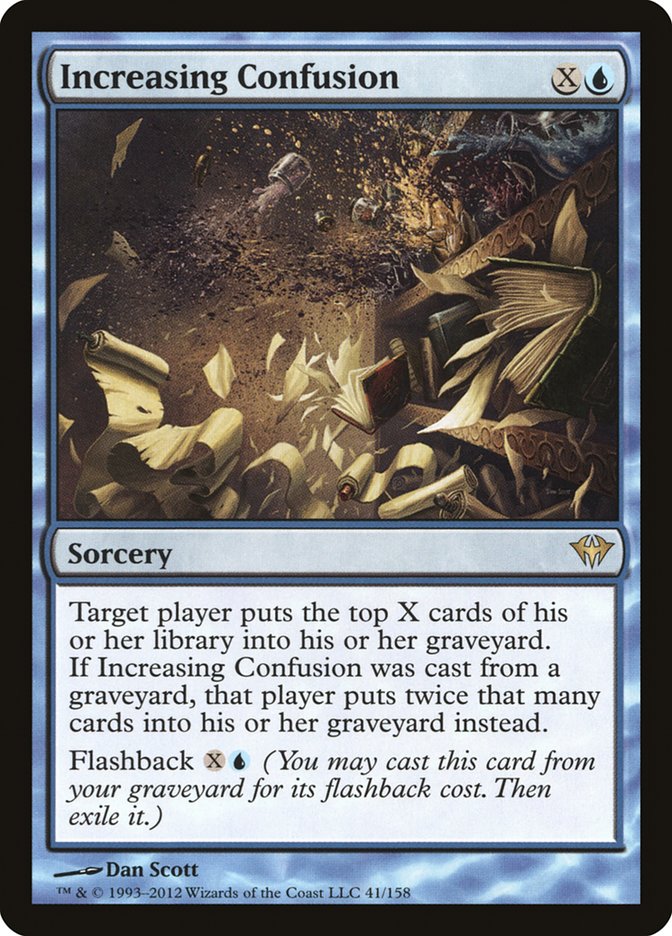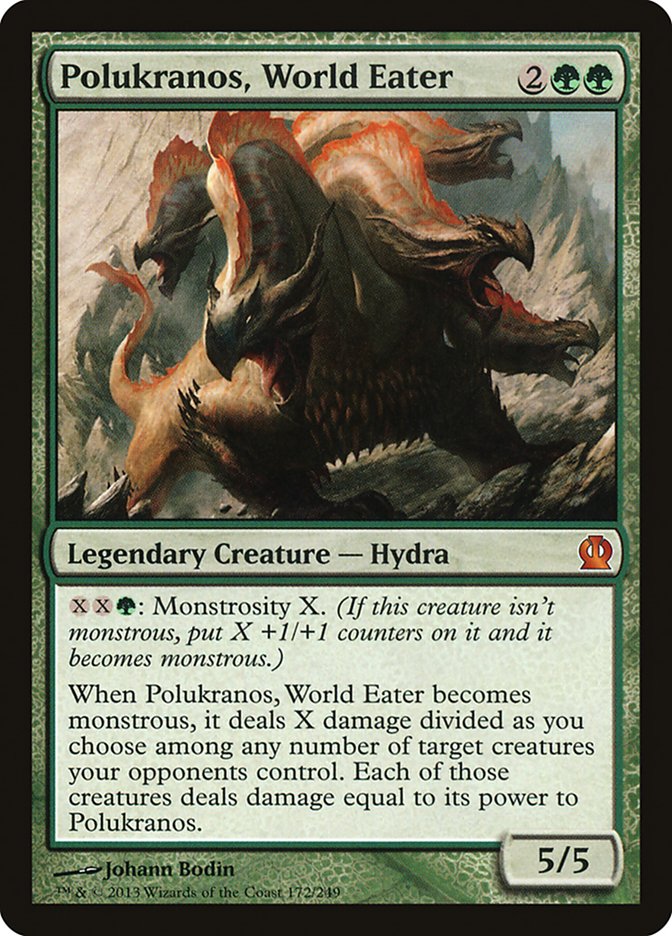One month ago, I wrote an article about the rules oddities of Theros. Normally when I write this type of article after a set’s release, one article is enough to cover the major interactions. From time to time, more interactions will pop up later but they won’t be worthy of a second article. Welcome to Theros, where the enchantment are creatures (sometimes), the creatures are auras (also sometimes), and no one is sure what they are in between.
Last time, I wrote a lot about Bestow. There was a lot of justifiable confusion about the mechanic in general, and a few weird interactions, particularly the way that you can bestow through an Aurelia’s Fury. This is actually an interaction with some Theros Limited relevance as you can Bestow auras on your opponent’s turn thanks to Prophet of Kruphix.
I’m back today with more rules because I’ve hit upon an even more confusing and unintuitive rules interaction than this Bestow madness. Last time, I covered the basics of the Gods. The easy rule of thumb is that they are creatures everywhere but on the battlefield, and on the battlefield they are sometimes creatures (just like a cookie is sometimes food). I have a new rule of thumb to introduce to you:
If you have four devotion on the field and cast a God, it does not enter the battlefield as a creature, but it is a creature that entered the battlefield.
If that sounds like gobbledygoop, then you are a sane human being. Let me try to explain how any of this is even possible with some examples.
For all of these scenarios we will presuppose having four devotion on the battlefield. Insert your own assortment of permanents, or just your favorite CCCC spell.

Now onto this board you cast your Thassa, God of the Sea. We know that it is a creature spell on the stack that can be Essence Scattered. We also know that on the battlefield, it is a creature because you have five total devotion to blue. Easy game. Let’s up the difficulty.
If you have previously resolved the Beck half of Beck//Call, will you draw a card?
If your opponent has an Imposing Sovereign on the battlefield, will your Thassa be tapped?
Seems like a simple “yes and yes” situation, but the answer is “yes and no.” You will draw a card for a creature entering the battlefield, but your Thassa will not be tapped because it does not enter the battlefield as a creature. The distinction here is one of replacement effects and triggers.
By definition, triggered abilities have to wait for the trigger event to occur. In the case of “enters the battlefield” triggers, the permanent is on the battlefield when the ability triggers. Rule 603.6a sums this up nicely, but it is really rule 603.6d that explains the devotion interaction fully. The key part of that rule is:
“Normally, objects that exist immediately after an event are checked to see if the event matched any trigger conditions. Continuous effects that exist at that time are used to determine what the trigger conditions are and what the objects involved in the event look like.”
This is why, for triggers, you evaluate the board position with the God on the battlefield, and thus include its mana cost for counting devotion, to see if it triggers any creature abilities. Why then does Imposing Sovereign fail to tap the Thassa in the above scenario with four devotion on the board before the God enters?
 I mentioned earlier that Imposing Sovereign has a replacement effect. This might seem odd to casual rules-mongers who are used to replacement effects having the format of “if [some effect] would happen, [some other effect] happens instead.” When training judges, I often mention the “if” and “instead” as keys to identifying replacement effects, but that’s just one rule of thumb for one class of replacement effects. Rule 614.1d states “Continuous effects that read “[This permanent] enters the battlefield…” or “[Objects] enter the battlefield…” are replacement effects.”
I mentioned earlier that Imposing Sovereign has a replacement effect. This might seem odd to casual rules-mongers who are used to replacement effects having the format of “if [some effect] would happen, [some other effect] happens instead.” When training judges, I often mention the “if” and “instead” as keys to identifying replacement effects, but that’s just one rule of thumb for one class of replacement effects. Rule 614.1d states “Continuous effects that read “[This permanent] enters the battlefield…” or “[Objects] enter the battlefield…” are replacement effects.”
So when something like a Temple of Silence enters the battlefield tapped, that is actually a replacement effect that modifies how the land enters, replacing “enter the battlefield untapped” with “enter the battlefield tapped.” Further down the subsection of replacement effect rules, we find rule 614.12, the real meat and potatoes of this weird interaction. Here is the rule in its entirety:
“Some replacement effects modify how a permanent enters the battlefield. (See rules 614.1c–d.) Such effects may come from the permanent itself if they affect only that permanent (as opposed to a general subset of permanents that includes it). They may also come from other sources. To determine which replacement effects apply and how they apply, check the characteristics of the permanent as it would exist on the battlefield, taking into account replacement effects that have already modified how it enters the battlefield (see rule 616.1), continuous effects generated by the resolution of spells or abilities that changed the permanent’s characteristics on the stack (see rule 400.7a), and continuous effects from the permanent’s own static abilities, but ignoring continuous effects from any other source that would affect it.”
For those of you who aren’t fluent in rules-ese, let me summarize it with our original example. When the Thassa spell resolves, it goes from the stack to the battlefield. Just before entering the battlefield, it has to evaluate if any replacement effects will modify how the card enters the battlefield. In our narrow example, Imposing Sovereign is a candidate for this, so we have to figure out if the Thassa would be a creature if it were currently on the battlefield. You might think yes, because there is currently a devotion of 4 with Thassa making it an even 5. But the wheels fall off of the devotion train because you have to consider what Thassa would look like on the battlefield without itself in play.
Ugh. Writing about this interaction leads to some awkward sentences like the last one. What I mean is, we have to consider whether Thassa would be a creature or not without taking the card’s own mana cost into account for devotion because Thassa itself is not yet on the battlefield. With the 4 devotion, it would not be a creature, and thus Imposing Sovereign’s replacement effect does not modify its entrance onto the battlefield to be tapped. So we have a card that is a creature on the stack, a creature when it enters the battlefield, but isn’t a creature as it enters the battlefield. Abbot and Costello couldn’t script it any better.

I want to wrap this up by highlighting a few other cards that I did not cover in my previous article due to lack of space and not knowing the kind of impact that these Theros cards would have on Standard. It turns out they are having a huge impact, and are also causing a few headaches.
Mana abilities have had a spotlight shined on them due to Nykthos, Shrine to Nyx and Xenagos, the Reveler. Nykthos’s second ability is indeed a mana ability despite the fact that it requires a strange mid-effect choice of a color. This is contrary to how the card was interacting with Burning Earth on MTGO, apparently not triggering the damage ability from the red enchantment. That was a bug, and hopefully one that has been fixed given the prevalence of Nykthos decks in the Standard format (although Burning Earth has fallen out of use recently).
Mana abilities are notable for not using the stack. This is important with Nykthos because it means that you cannot respond to its activation to kill a creature and reduce the devotion. If you want to reduce your opponent’s devotion to Nykthos, you’ll have to do so before they activate the ability. If they play the land on their turn, you won’t get the opportunity to get rid of a creature before they activate the ability either.
On the other hand, Xenagos, the Reveler does not have a mana ability. There is a specific rule that prohibits any Planeswalker’s loyalty from being a mana ability. The same was true for Koth of the Hammer. Delving deeper into the rules, mana abilities are abilities that can be played during the process of casting a spell or activating an ability. Thus, the sorcery speed loyalty abilities on Planeswalkers don’t fit the bill. Neither do targeted abilities like Deathrite Shaman because you must have the opportunity to disrupt the target and fizzle the ability. (Fringe exception: Lion’s Eye Diamond’s text specifically restricts when it can be activated. It is still a mana ability and you cannot respond to the discarding of cards.) Since Xenagos does not have a mana ability, you can respond to its +1 activation and remove some creatures to reduce the amount of mana he creates. It may be time to party, but just not quite as hard.
Past 5/5 for four mana Deadbridge Goliath did not see any Standard play, but the most recent Juzam Djinn, Polukranos, World Eater, has made a splash in Nykthos-fueled devotion decks. This has brought a few issues to light with regards to the Monstrosity ability that are worth going over. Some of this will apply to monstrosity in general and you can port your understanding to other cards.

First, Monstrosity can be activated multiple times, but a creature can only become monstrous once. Subsequent activations of monstrosity will do nothing; you don’t get more counters nor can you trigger the follow up ability again. Being monstrous is a characteristic of the card that you can’t copy with a Clone.
Second, that follow-up (the pseudo-fight effect on Polukranos, for example) is a separate triggered ability, not an additional part of the Monstrosity effect. It doesn’t trigger until the creature actually becomes monstrous, not when you activate Monstrosity, and if your Polukranos is eliminated in response to the activation, you won’t be eating anything at all.
These two points in conjunction can lead to some interesting play choices that you should be aware of. To play around the possibility of your Polukranos being removed in response to Monstrosity, you can activate it for a smaller amount of X — no need to overkill — and then if your opponent tries for the removal spell, you can respond to that with another instance of monstrosity on the stack. Your second monstrosity would resolve first as would the triggered ability, taking out the opposing creature in the fight. With the large amounts of mana that Nykthos can generate, and the variable X, this is a real possibility in games.
Speaking of X, there are a few tidbits to keep in mind with it. Many people are initially confused by the double X. That just means that if you want to give X +1/+1 counters, you will need to pay X twice (and the one G), so +4/+4 requires 4+4 = 8 colorless and one green mana. When you go monstrous and trigger the ability, you target up to X creatures. This X is the same as the value you activated the ability for. If you’ve put multiple Monstrosity abilities on the stack, it will use the value of whichever activation resolves first. If you choose four targets in this case, you must divide the damage upon targeting with at least 1 point of damage directed at each target. You cannot divide the damage as 0, 0, 0 and 4 just to target some extra Illusions to wipe them out while still dealing 4 damage to something.
I want to thank everyone for the response to my article two weeks ago. I’ve talked to many people in person and online who have been inspired to make some changes in their personal eating and exercise habits. There’s a long way to go for individuals and for the community as a whole, but we have to start somewhere. I’ve started Tweeting with the hashtag #mtgfit after my workouts and good eats. I hope you will as well, and encourage each other in these endeavors.
